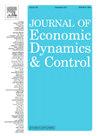是什么推动了德国趋势产出增长?行业观点
IF 2.3
3区 经济学
Q2 ECONOMICS
引用次数: 0
摘要
在本文中,我们概述了跨部门的物质和资本联系,以量化德国生产网络在放大部门动态对总趋势国内生产总值增长的作用。这使我们能够研究部门劳动投入和全要素生产率趋势增长变化对长期产出增长持续下降的影响。我们的估计表明,特定行业的发展在历史上占了这种长期下降的一半。回顾两德统一时期,我们发现专业和商业服务领域全要素生产率增长的显著下降,以及建筑业劳动力投入增长的下降,导致了20世纪90年代德国趋势产出增长的急剧下降。在过去的几十年里,我们进一步记录了这些部门作为经济投入供应商的重要性的重大变化。我们的分析表明,劳动密集型的建筑业是生产网络中的主要投入枢纽,其长期放大效应超过其增加值份额的四倍。考虑到即将发生的人口结构变化,该行业自动化的低潜力可能会大大降低德国未来的趋势产出增长。本文章由计算机程序翻译,如有差异,请以英文原文为准。
What drives German trend output growth? A sectoral view
In this paper, we outline material and capital linkages across sectors to quantify the role of the German production network in amplifying sectoral dynamics on aggregate trend gross domestic product growth. This allows us to study the impact of sectoral labor input and total factor productivity trend growth variation on the persistent decline in long-run output growth. Our estimation reveals that sector-specific developments have historically accounted for half of this long-term decline. Zooming into the reunification period, we find a pronounced decline of total factor productivity growth in Professional and Business Services together with a fall in labor input growth in the Construction sector to drive the sharp decline of German trend output growth over the 1990s. We further document significant changes regarding the sectors' importance as input suppliers to the economy over the past decades. Our analysis identifies the labor-intensive Construction sector as a major input hub in the production network, its long-run amplification effect exceeding four times its share in value added. Given the impending demographic change, the low potential for automation in this sector may significantly reduce future German trend output growth.
求助全文
通过发布文献求助,成功后即可免费获取论文全文。
去求助
来源期刊

Journal of Economic Dynamics & Control
ECONOMICS-
CiteScore
3.10
自引率
10.50%
发文量
199
期刊介绍:
The journal provides an outlet for publication of research concerning all theoretical and empirical aspects of economic dynamics and control as well as the development and use of computational methods in economics and finance. Contributions regarding computational methods may include, but are not restricted to, artificial intelligence, databases, decision support systems, genetic algorithms, modelling languages, neural networks, numerical algorithms for optimization, control and equilibria, parallel computing and qualitative reasoning.
 求助内容:
求助内容: 应助结果提醒方式:
应助结果提醒方式:


